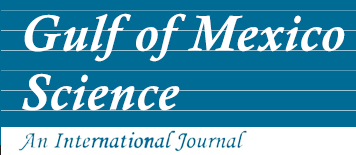Alternate Title
Timing, Species Participation, and Environmental Factors Influencing Annual Mass Spawning at the Flower Garden Banks (Northwest Gulf of Mexico)
Abstract
Since 1990, highly predictable and intense annual mass spawning events have been witnessed at the Flower Garden Banks (northwestern Gulf of Mexico), and more recently at several other western Atlantic coral reefs as well. The annual reproductive period at the Flower Gardens coincided with the summer seawater temperature maximum and occurred between the seventh and 10th evenings following a full moon in August or September. Species-specific peaks of activity were centered on the eighth and 10th evenings. Coral spawning at the Flower Gardens began within 1 hr of sunset and continued for roughly 4 hr. On the eighth evening, coral species observed spawning during the first 2.5 hr were Diploria strigosa, Montastraea cavernosa, and M. franksi. Other reef-dwelling invertebrate species were also consistently seen spawning during this time. Montastraea annularis, M. faveolata, and Stephanocoenia intersepta spawned about 1 hr later, following a brief transition period during which little spawning activity was observed. The 10th evening was characterized by the successive spawning of Colpophyllia natans (early evening) and S. intersepta (late evening). Male colonies of the gonochoric species M. cavernosa and S. intersepta typically began spawning up to 30 min before females, although several individuals of M. cavernosa have been observed spawning more than 3 hr before females.
Recommended Citation
Hagman, D. K., S. R. Gittings and K. J. Deslarzes.
1998.
Timing, Species Participation, and Environmental Factors Influencing Annual Mass Spawning at the Flower Garden Banks (Northwest Gulf of Mexico).
Gulf of Mexico Science
16
(2).
Retrieved from https://aquila.usm.edu/goms/vol16/iss2/6

